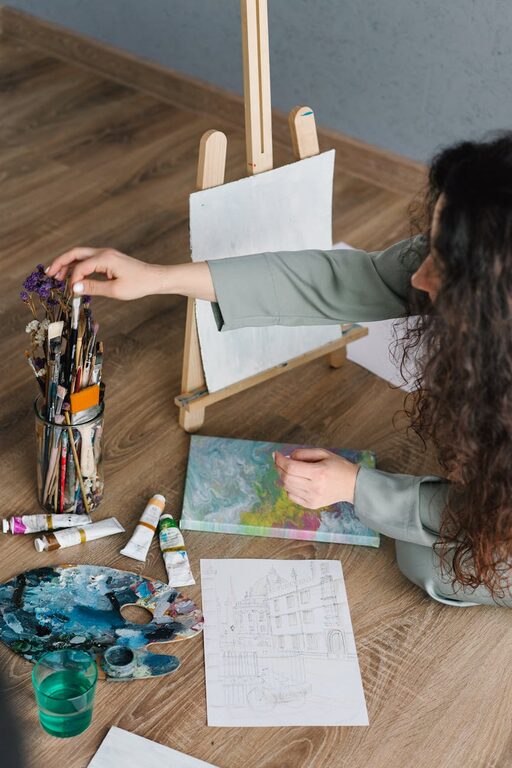Creativity isn’t just for artists or inventors—it’s a skill that anyone can nurture and develop. Integrating small, manageable practices into your daily routine can help you think more creatively, solve problems with fresh ideas, and experience greater joy in your day-to-day life. Whether you want to write, design, cook, or simply boost your imagination, these simple ways to practice creativity every day will guide you on your journey.
Why Practice Creativity Daily?
Creativity is like a muscle—the more you exercise it, the stronger and more flexible it becomes. When you make creativity a regular part of your life, you:
– Improve problem-solving skills
– Enhance your ability to adapt to change
– Increase mental clarity and motivation
– Enjoy greater personal satisfaction and fun
The good news? You don’t need special tools or hours of free time. Small habits done consistently can lead to big creative breakthroughs.
1. Keep a Daily Journal or Idea Notebook
Writing regularly encourages your brain to organize thoughts and explore new angles.
– How to start: Dedicate 5-10 minutes each day to jot down ideas, observations, questions, or sketches.
– Tip: Don’t worry about grammar or neatness—just capture your thoughts freely.
– Benefit: Over time, this becomes a treasure trove of inspiration and a way to track your creative progress.
2. Try “Morning Pages” or Freewriting
First thing in the morning, write three pages of whatever comes to mind without editing.
– Why it works: It clears mental clutter and unlocks hidden ideas by tapping into your subconscious.
– Getting started: Set a timer for 10 minutes and write nonstop—don’t pause or judge what you write.
3. Take a Walk or Change Your Environment
Sometimes creativity needs a fresh perspective.
– Simple step: Step outside for a walk, visit a new place, or rearrange your workspace.
– Benefits: Changing scenery can inspire new thoughts and break rigid thinking patterns.
– Bonus: Physical movement also boosts brain function.
4. Practice Brainstorming with No Judgment
Creativity thrives when ideas flow freely.
– How to do it: Set a timer for 10 minutes and write as many ideas as possible on one topic—no filtering.
– Example: If you like cooking, brainstorm unusual ingredient combinations or meal ideas.
– Why it helps: Encouraging quantity over quality strengthens creative confidence.
5. Explore New Skills or Hobbies
Learning diversifies your thinking and stimulates creative connections.
– Ideas: Try drawing, photography, playing an instrument, cooking a new dish, or learning a language.
– Approach: Pick one new activity to explore for a few weeks to build a habit.
– Outcome: You’ll gain fresh tools and viewpoints to apply in your main creative interests.
6. Practice Mindfulness and Meditation
Creativity isn’t always about doing more—it’s sometimes about slowing down.
– How it helps: Mindfulness calms the mind, allowing new ideas to come through without distraction.
– Try it: Spend 5-10 minutes focusing on your breath or sounds around you.
– Extra tip: Notice when your mind drifts to creative insights during meditation.
7. Collaborate and Share Ideas
Two (or more) minds can spark greater creativity.
– Ways to connect: Join local clubs, online forums, or casual meetups in your area of interest.
– Benefit: Feedback, fresh perspectives, and encouragement often lead to breakthroughs.
8. Limit Screen Time and Digital Distractions
Too much passive digital consumption can dull creativity.
– Actionable step: Designate tech-free times, such as during meals or before bed.
– Alternative: Replace some screen time with reading, sketching, or playing a musical instrument.
9. Set Small, Achievable Creative Challenges
Challenges keep motivation high and prevent creative stagnation.
– Examples: Draw one object a day, write a poem weekly, or cook a themed meal.
– Tip: Celebrate completion to boost confidence.
10. Reflect on Your Process and Celebrate Progress
Taking time to look back helps you recognize growth and improve.
– How to do it: Review your journal weekly and note what inspired you and what held you back.
– Why: Reflection encourages intentional creative growth rather than accidental bursts.
—
Final Thoughts
Creativity is accessible to everyone, and integrating simple daily habits is one of the most effective ways to nurture it. Remember, consistency matters more than perfection. Try a few of these practices, keep an open mind, and enjoy the exciting journey of becoming more creatively alive every day.
Happy creating!

